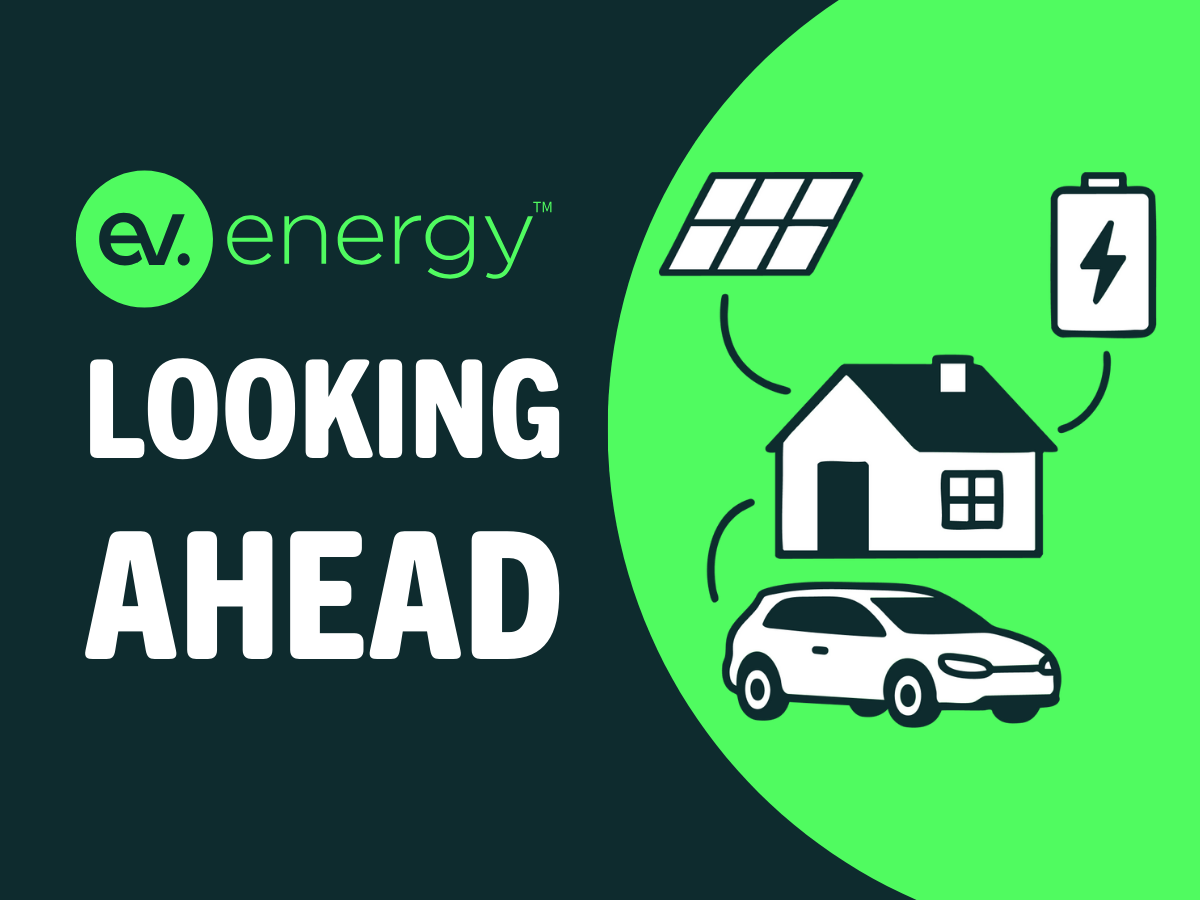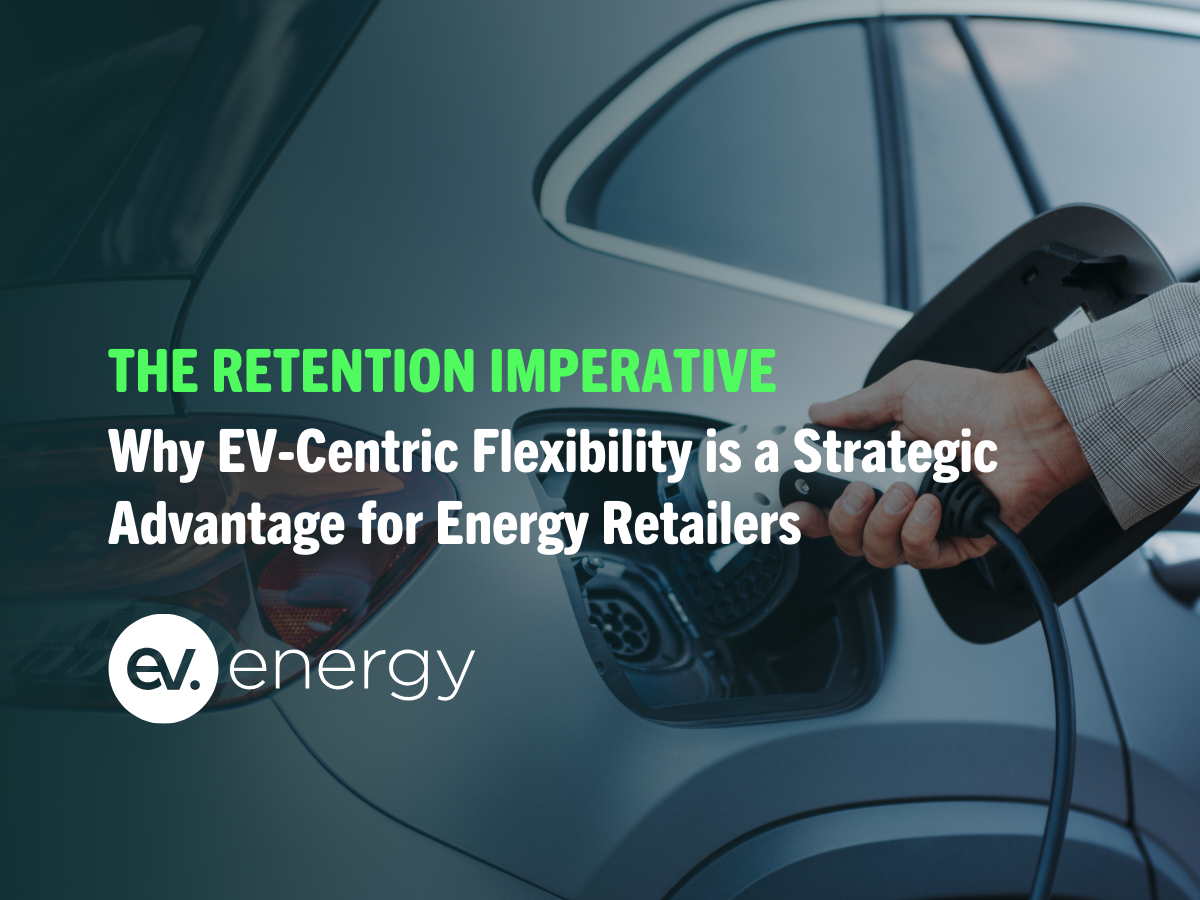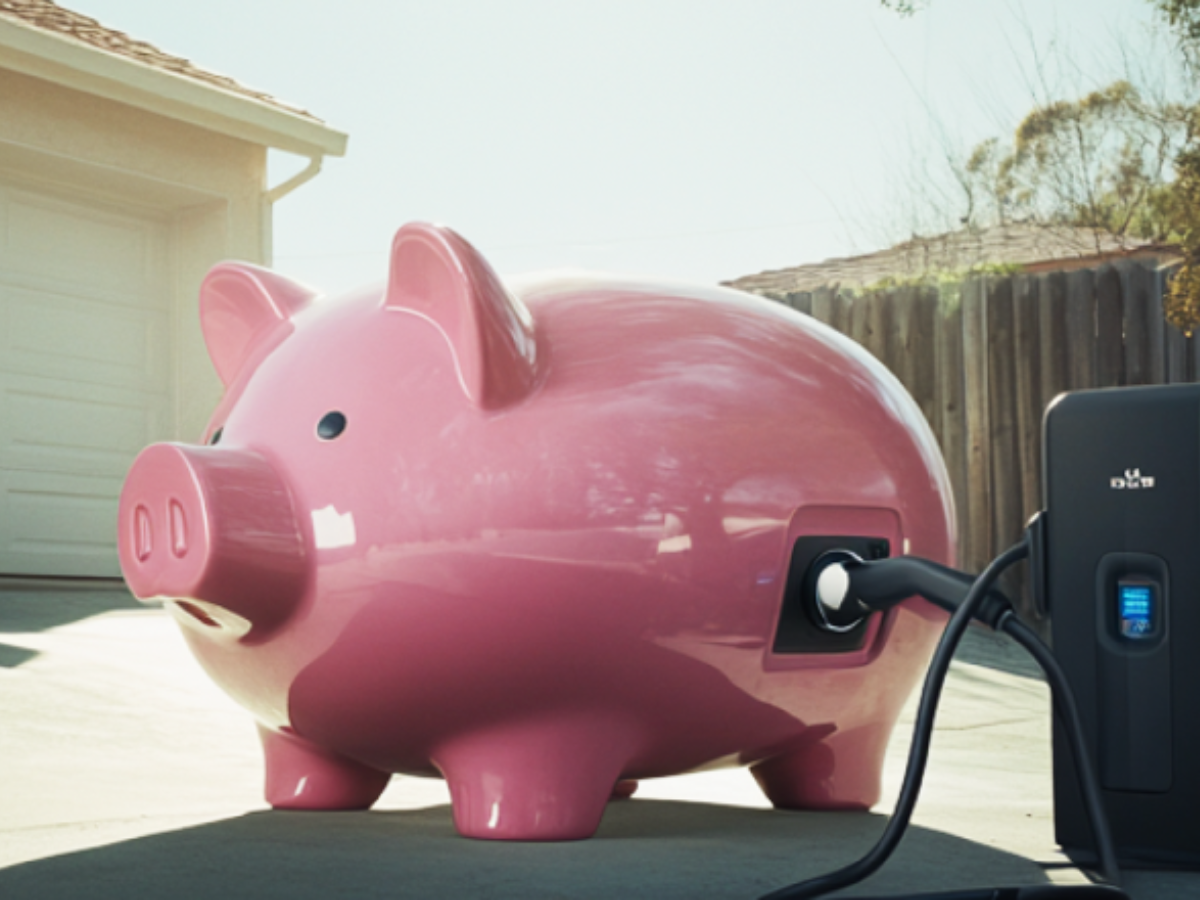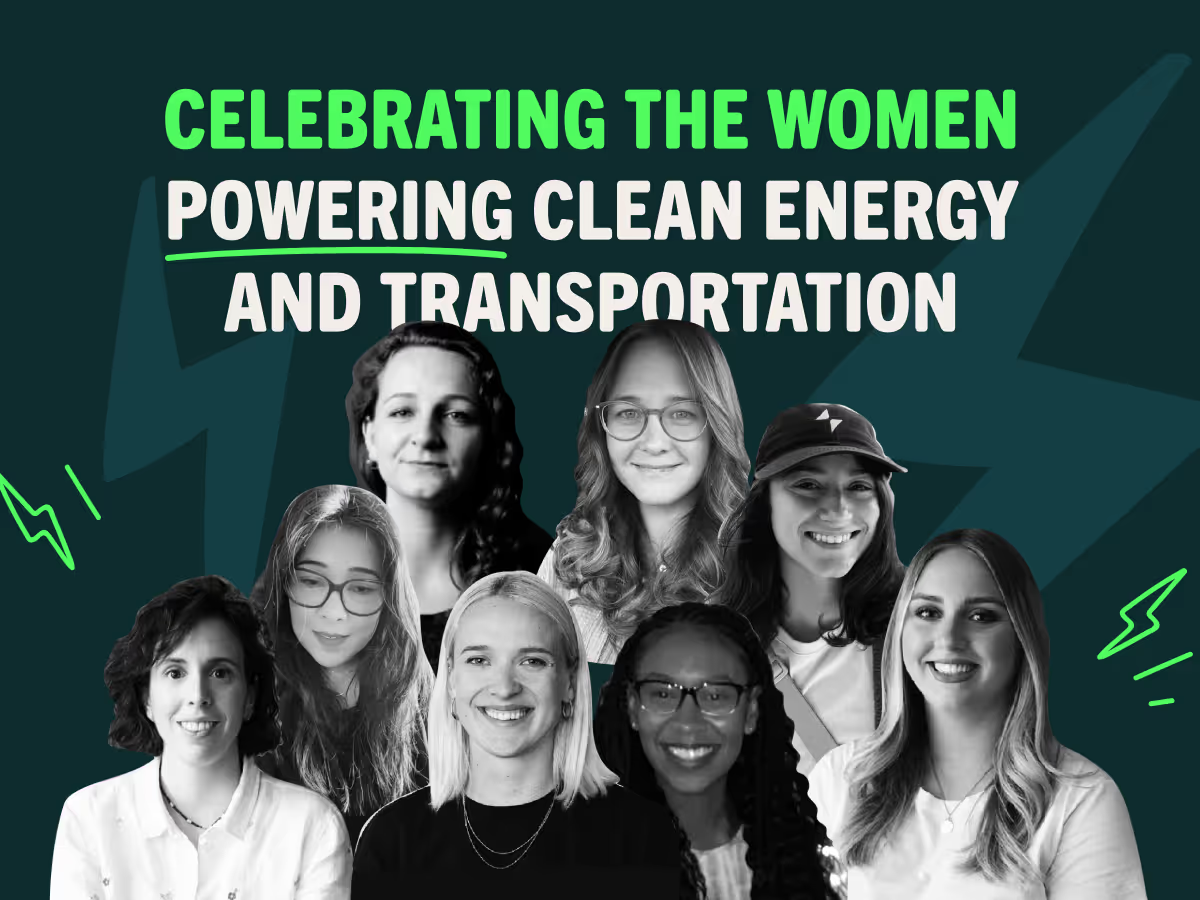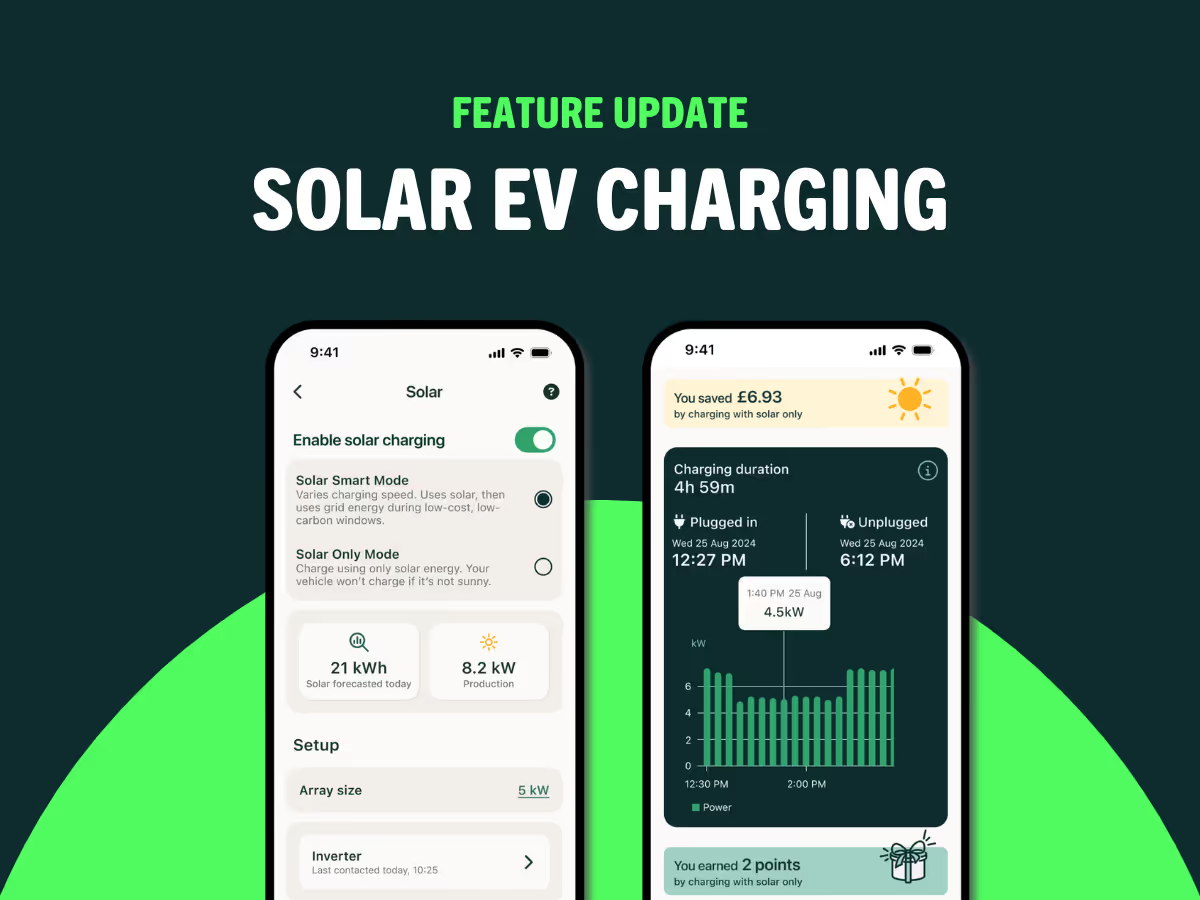Carbon Impact Report 2022: Net-negative carbon emissions for 2 years in a row


In this report
- Headline stats
- Team emissions
- Platform operation emissions
- Smart Charging savings
- Electric vehicle adoption savings
- Goals for 2023
In our first Carbon Impact Report last year, we found that ev.energy was carbon-negative in 2021.
Put simply, the carbon savings from creating and maintaining our Smart Charging technology, more than offset the carbon generated by our team and running our platform.
Since then, we’ve continued to support the transition to electric vehicles, doubling our user base, significantly growing the team and scaling our platform operations.
So what was ev.energy’s carbon impact in 2022? Here’s what we found.
ev.energy continues to be carbon negative
We saved at least 762 tonnes of carbon in 2022 by delivering greener, cheaper and simpler charging, estimates show.
Carbon savings generated through Smart Charging and supporting the transition to electric vehicles came to an estimated 956 tonnes.
That more than offsets the estimated 194 tonnes of carbon from our team and platform operations, giving a net saving estimated to be 762 tonnes in 2022.
This year’s report should be even more accurate, as we’ve made some improvements to build on our methodology from last year. We’ll explain any changes along the way.
Team carbon: 169 tonnes

While our team size has doubled in the past 12 months, thanks to strong progress in executing our mission, we continue to work fully remotely without an office or commute and team emissions remain low.
What’s changed
For our 2021 report we measured the total personal carbon consumption of every employee – holidays, home life, everything.
We decided that while this may be a whole view of the person, it’s not an accurate representation of the company.
This year we’ve chosen to be more specific; only measuring emissions associated with working for ev.energy.
Method
We got each employee to calculate their emissions associated with working for ev.energy - sustenance, travel, accommodation, etc.
We then included a proportion of our employee's home emissions so we could account for heating, lighting and powering their workstations.
To help us break this down for our employees in the US and the UK, we used benchmark data from the Homeworking Emissions Whitepaper 2020 produced by EcoAct, a leading international consultancy helping businesses to reduce their carbon impact.
To work out the energy required (kWh) we used the following calculations.

To establish what this equated to in kg/CO2 we needed to multiply this by average emissions factors in the UK and the US.

Results
- Employee transport and secondary emissions - 160 tonnes
- Heating emissions - 9 tonnes
- Total employee carbon emissions - 169 tonnes
Platform carbon: 25 tonnes

As a software company, we do not use many physical materials or require products to be shipped across the globe. Nearly every tool we use to deliver our products and services is cloud-based, which helps to limit emissions.
What’s changed
We used the same methodology as last year, but we’ve also accounted for carbon emissions linked to data storage in addition to computing emissions.
While this is still an estimation, we believe this gives us an even more accurate picture of emissions in 2022 vs 2021.
Method
We use Amazon Web Services (AWS) to host our platform, as do nearly all of the companies we work with.
First, we worked out the carbon impact of ev.energy’s AWS usage and calculated the CO2 emissions per British Pound.
This allowed us to assess the impact of all the cloud platforms we use for building and maintaining our products and services as well as running marketing, support and business operations.
Results
The inclusion of data storage emissions coupled with our increased platform spend has resulted in more than a 100% increase in our total platform emissions.
- 2021 - 11 metric tons of CO2e
- 2022 - 25 metric tons of CO2e
Smart Charging carbon: 260 tonnes saved

Our Smart Charging technology is at the core of what we do. It allows us to charge electric vehicles around the world with the cleanest energy, all while putting money back into driver’s pockets.
Method
Calculating our impact here was simple, it’s something we measure and report on every day for our 100,000 users.
To calculate the carbon savings, we looked at the CO2 emissions (CO2e) a charging session would have had if the vehicle had charged as soon as it was plugged in. We call this the "counter-factual".
We then compare that with the CO2e associated with the "actual" charging session, where we've optimised for the greenest energy periods available.
We then look at the difference in CO2e emissions between the two, which gives us our savings.
Results
Despite our user base continuing to grow, we found that Smart Charging savings did not differ much from 2021.
We’ve seen considerable growth in the US market, where the structure of rate plans often dictates that prices are cheapest overnight.
Unfortunately, this doesn’t always coincide with the lowest carbon periods, which can often be during the day due to an abundance of solar power.
Looking ahead to next year, we believe that the growth of our solar charging subscription product, ev.energy SOLAR, will enable more US drivers to enjoy zero-cost, zero-carbon EV charging at home and contribute to greater overall carbon savings.

Electric vehicle adoption carbon: 695 tonnes saved

Charging plays a critical role in delivering truly zero carbon transport.
Drivers and businesses rely on ev.energy products and services to access cheaper, greener and simpler EV charging, while installers and charger manufacturers are able to fit more chargers and OEMs can remove barriers to shift more drivers to electric vehicles.
We use electric vehicle carbon as our contribution to supporting this growth in adoption and helping drivers to ditch ICE vehicles.
What’s changed
In last year’s report, we assigned a carbon-saving contribution to all of the EV drivers on our platform who joined from 2018 to 2021.
This year, we’ve only included new drivers who joined the platform in 2022 to avoid double-counting existing drivers.
Method
ev.energy drivers who joined in 2022 drove 70,246,550 miles last year.
From this total number, we’ve assigned our contribution to be 5%, based on our work to increase access to EV charging and make the experience simpler and more compelling.
Some examples include launching a new Shared Charging solution for apartments and workplaces, creating a seamless charger installation experience, and delivering our smart charging app for drivers.
We then compared the emissions associated with the average petrol or diesel car over the same number of miles.
Finally, we removed some emissions for manufacturing and charging emissions.
This method is based on some assumptions and therefore the figure of 695t is an estimate.
Results
We avoided 695 tonnes of CO2e in 2022 by helping our drivers transition to electric vehicles.
This number is lower than last year, as drivers from previous years haven’t been counted.
The good news is that we saved more carbon per driver in 2022. This is probably due to the average mileage of each driver being up after COVID-19 restrictions have eased.
Our goals for next year

As we look towards the future, we’ve committed to the following changes for 2023 reporting.
- Build a holistic, ambitious set of goals aligned with the UN’s Sustainable Development Goals
- Publish guidance on how to reduce emissions when working from home and coworking spaces
- Increase our Smart Charging driver base by 100%
These goals will give us a better direction and leverage as we further our work to reduce carbon emissions and support the energy grid, all while delivering cheaper, greener and simpler EV charging for everyone.
Want to learn more about our work?
Visit the ev.energy News page to discover our latest products, research and partnerships.
